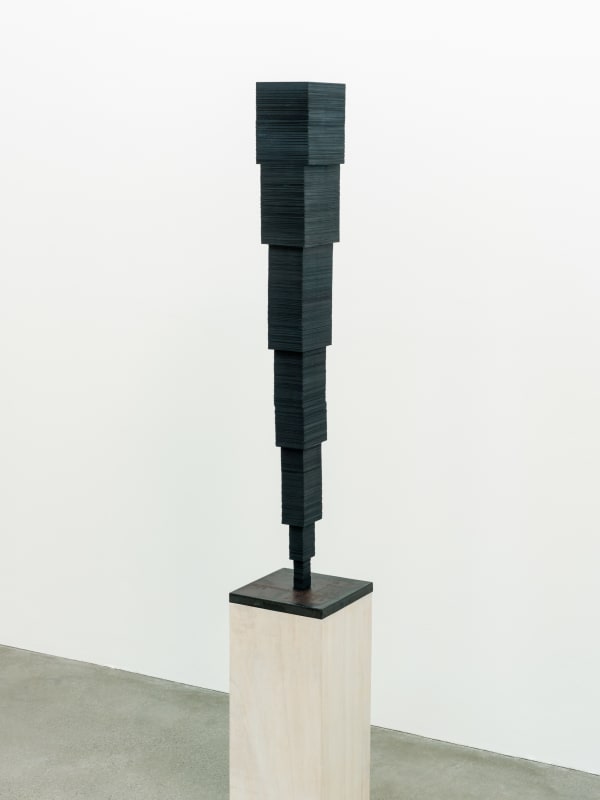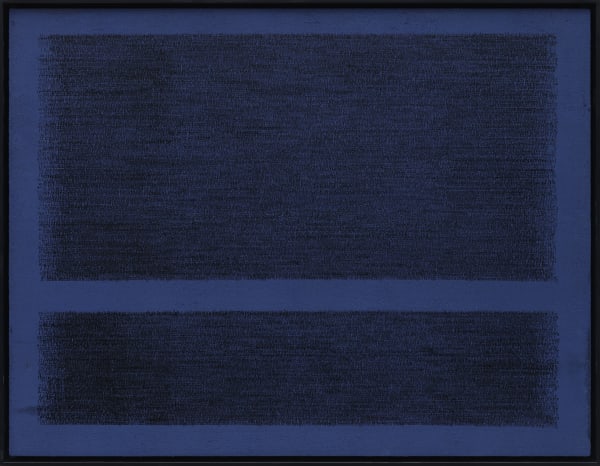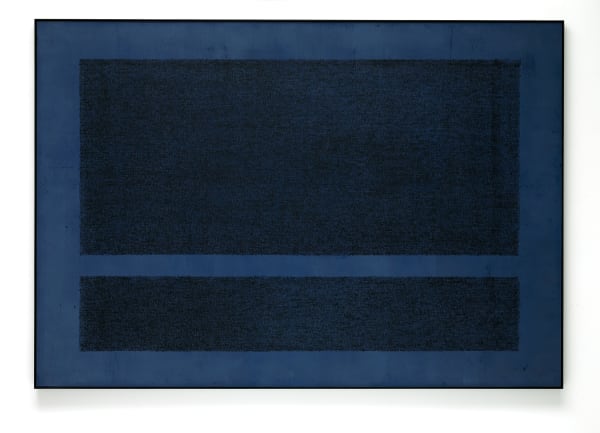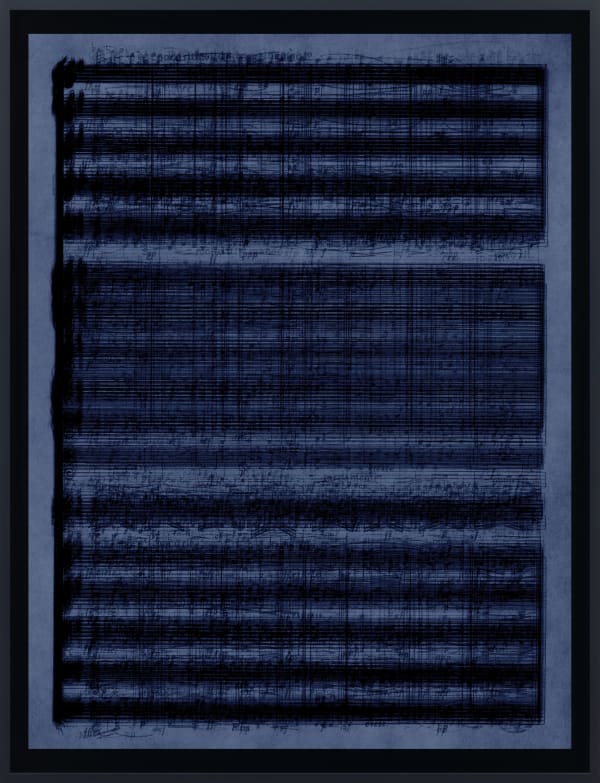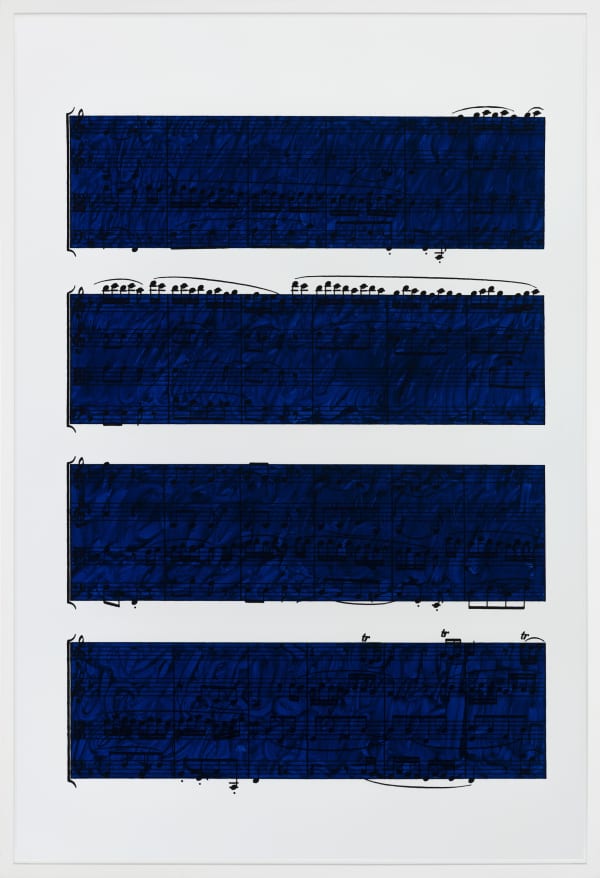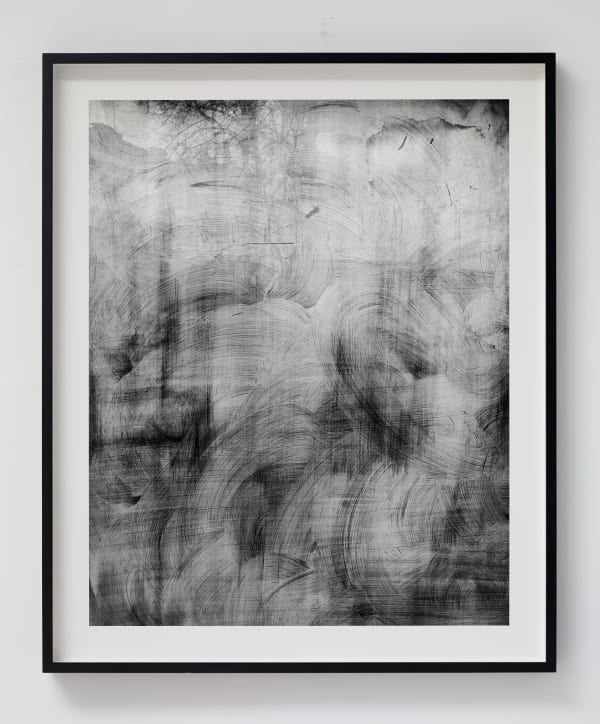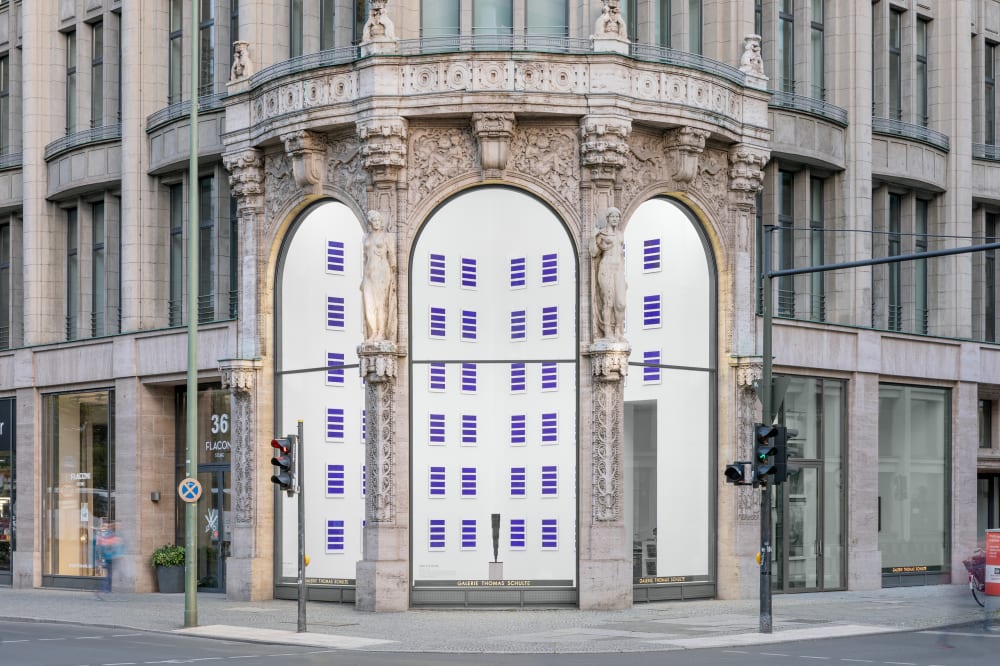On the 6th of September 2019, Galerie Thomas Schulte opens the exhibition Quartet by Idris Khan. In his fourth solo exhibition at the gallery, the artist presents four groups of works, in which he explores ideas of time, memory, and creativity through various media processes. Khan superimposes images, texts, and sheet music in such a way that abstractions of a meditative character emerge through the condensation of form and color.
In the centre of the gallery’s Corner Space is the maquette for a new eight-meter high sculpture, 65,000 Photographs. The abstract column is formed of several blocks, which are stacked on top of each other growing in size towards the top; their dimensions representing the standard sizes of photographic prints. It refers to Khan’s personal archive of 65,000 photographs, which the artist took over the past five years. The sculpture encourages us to reflect the extent to which taking pictures to document our lives and capture memories has increased and continues to increase. 65,000 Photographs has been commissioned to be revealed on the Southbank of the river Thames in London this October.
Lending its title to the entire exhibition, Idris Khan presents his new sixty-part installation Quartet (2019) in the gallery’s Corner Space. Mounted on aluminum and gesso panels, Khan uses enlarged fiber-printed pages of sheet music as the ground for this serial work of abstract oil stick paintings. On each of the panels the notation itself has been blocked out by an impasto, expressive application of black and blue oil paint and gesso, leaving visible only very high and low musical notes, dynamics, and articulation marks. The installation in its entirety takes on a minimal presentation in form of a grid. Installed in equal distance from one another the panels spread across the two nine-meter high walls. Music is often seen as an abstract representation of human emotions. Notation systems are a further means of abstraction; an attempt to translate and render the ephemeral, time-based sound replicable and conservable. However, like emotions, the experience of music can neither be repeated nor relived. Khan’s Quartet eloquently speaks of this impossibility emphasizing the silence of the material, while at the same time using it for a new creation; a new composition with its own rhythm and expressiveness.
Belonging to another new body of visual work relating to music, The Old Tune, Lost Happiness, and The calm is but a wall (all 2019) are three large photographic prints, each made by digitally layering the scanned pages of a musical score. Having previously dyed the sheets in different hues of blue, Khan—while using contemporary technology—has created works reminiscent of a historical reproduction technique: the so-called cyanotype or blueprinting process developed in the mid-1800s. Although one can neither hear nor decipher the music, reading the titles of the works together with looking at the different tones of blue may evoke a sense of nostalgia similar to the feeling one might experience when listening to the music itself or looking at old photographs.
Juxtaposed with the large blue photographic prints in the main exhibition space, are three similarly large blue abstract paintings, The fleeting ground before your feet, Still While, Still Light and Unhearing and Unseeing (all 2019). Using the technique of stamping text onto blue tinted, gessoed aluminum panels, Khan in his Stamp Paintings quotes the work of famous authors including Samuel Beckett, Emily Dickinson, T.S. Eliot and Philip Larkin, among others. Taking inspiration from their work and appropriating their words in the most direct way possible by reproducing them on the panels, the artist immediately obscures their meaning by repeatedly layering the text thus rendering it illegible. Translating—transforming—text into an image, Khan’s work thus forever resists the fixation of literal meaning. Using language as a means to creating a painting, thereby abstracting it, individual words loose their meaning and become condensed into a plane, haphazardly accumulating into new shapes: into rectangular fields of black paint.
Finally, the fourth group of works in the exhibition—fittingly installed in the gallery’s Window Space—is a series of abstract black-and white photographs with the title “White Windows”. Each work of this series in itself consists of a digital layering of multiple photographs of the whitewashed shop windows of abandoned businesses across the country, which the artist took over the past five years. Khan’s fascination with the symbolism of the act of whitewashing windows is again directly linked to his interest in the human experience of time and memory. Having removed all physical traces from the site that formed part of and bore witness to their existence, paradoxically, the previous owner having whitewashed the transparent glass has also left an opaque, anonymous, handwritten trace. In order to erase the past—which means to erase memory—more traces, layers of white paint are spread onto transparent glass panes. In the same way that we cannot go back in time and undo our deeds and memories, the only way to forget is to erode them by creating and adding more and more layers, more and more memories.


